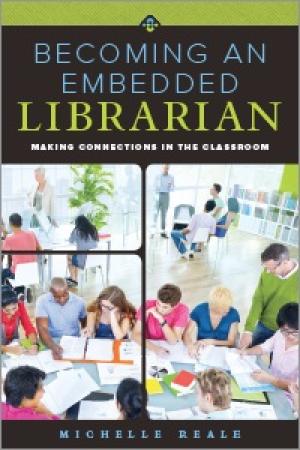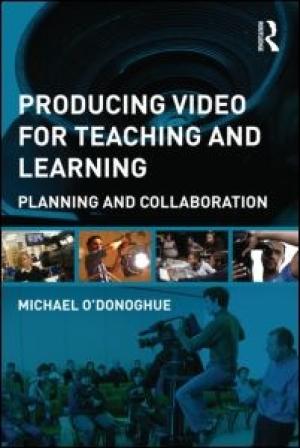Resources by Brad Ost

It would be easy to become intimidated while reading Michelle Reale’s book. It isn’t just her wealth of practical knowledge and hard won experience that may intimidate the reader, it is the daunting nature of embedded librarianship (EL) itself. Reale writes that “embedded librarianship necessitates the stepping out of an old, comfortable role and embarking on a new way of being, without the safety net of known results” (79). Even so, setting the intimidation factor aside, there are excellent reasons to add this book to your reading list. The author makes the most of this slim volume, a mere 104 pages, by combining both her personal journey through and scholarly support for her flavor of EL. Tucked in the middle of Reale’s twelve chapters are two chapters discussing educational theory in-depth as it applies to EL. The author’s theoretical foundation is based on Jean Lave and Etienne Wenger’s “community of practice” model of learning. This community work constructs learning through the art of conversation. In addressing the group work that establishes a community of learning Reale writes “learning begins to take shape in community as students are encouraged to think out loud” (37). Her focus is on the librarian encouraging and mediating student communities within the classroom. This approach explains her dedication to in-person EL. While Reale’s scholarship on the application of educational theory to EL is helpful, it is her personal journey that makes this book special. Reale brings the reader along the path, mitigating neither failure nor success, allowing the individual to decide whether this journey is also for them. The book reads a bit like a suspense novel with the reader wondering whether the hero will survive the next faculty encounter or student misunderstanding. The journey is filled with practical advice including concept mapping – hand out sheets of paper with just circles in them to allow the students to fill in; marketing – quoting Ulla de Stricker “Marketing isn’t our issue. Relationships are” (73); and personal goal setting that helps librarians visualize success. Reale’s chapters “Relationship Building,” “Clarifying Your Role,” “Establishing a Teaching Style,” “Setting Personal Goals,” and “Personal Branding” are as effective for standard librarianship as they are for EL. Consequently, even if the reader decides the EL journey is not for them the read is still worthwhile. There was one small negative. It is not evident from the cover that the book discusses only in-class embedding. There is no discussion about online embedding which is becoming more and more relevant with the rapid growth of online education. That in itself is not negative. But this comment juxtaposing online and actual classroom embedding, “I am primarily interested in actual classroom embedding and believe it to be true embedding” (xviii), may lead some to believe Reale is a bit too chauvinistic in her approach. Her comment on one-shot instruction, “The days of one-shot instruction just don’t work anymore,” (8) may add weight to this opinion for those who strive to excel in online embedding or creatively moving forward with one-shot instruction. But considering the value of the rest of the work these are minor concerns.

Michael O’Donoghue writes that he has “attempted to create a work which [he] hope[s] is more of an educational thinking and production tool than a how-to-guide”(xi). The book does not quite achieve this particular goal because the author has, in fact, quite nicely done both. His paradigm for pedagogy’s interaction with video and his helpful sections on effective video creation gives the reader a philosophical as well as a practical grounding in the use of video in academic settings. O’Donoghue’s emphasis on teaching and learning ensures that every concept behind video production is linked in some way to a principle in teaching and learning. Making a pitch, or selling an idea for a video allows for review and reflection by teachers and students. Creating a framework for the film gives the educator an opportunity to clearly define learning objectives and outcomes. And a concern over the visual format of the film leads to a discussion on how teaching objectives are presented and received. While this may sound like a rather clumsy construction, O’Donoghue -- in part due to a clean and clear writing style -- pulls it off. As the educational justification is laid out for every aspect of multimedia production using video, readers begin to realize that something else is occurring. They are learning the technical aspects of video production and creation. While video production can seem intimidating, O’Donoghue walks the reader through the process from pitching and scripting to camera usage and post-production. His appendices add to the wealth of direction with an example of a pitch document, an illustrated storyboard, a production course structure, and a short section on lecture capture. But, by far, the best section in this book is the chapter of expert interviews. The author interviewed over twenty people on the use of educational video. He pared those down to the six who appear in chapter five, which is titled “Six of the Best.” And the title does not lie. Among the interviewees is are Sir David Attenborough, of natural history filmmaking renown, and Richard E. Mayer, one of America’s deans of academic multimedia usage. And there is a gem within this gem. The interviews are far ranging, illuminating, and different for each person. However, the final question is the same for them all: “Do you have suggestions for improving educational video productions?” Not only does the reader get very practical tips from these six but the author also gives the response to that question from all twenty-three persons interviewed. There is an embarrassment of riches here. The final chapter, concerning student production of a video, is interesting and practical but could have been longer. The further reading section and bibliography are also helpful and the index is surprisingly robust for such a short book. While the technology used in filming has changed in the last few decades many of the concepts of filming have not. Consequently, I see this philosophically and technically practical book being relevant and extremely useful for many years to come for educators in higher educational contexts.